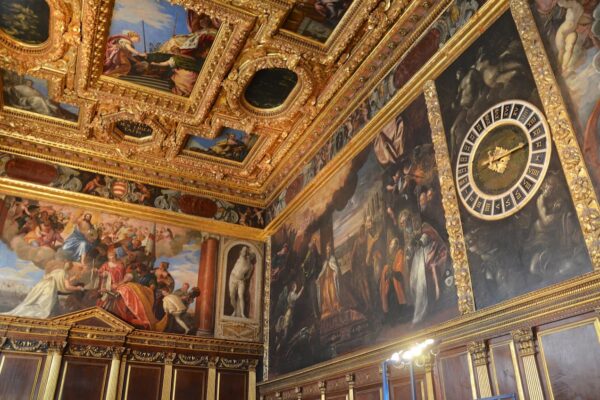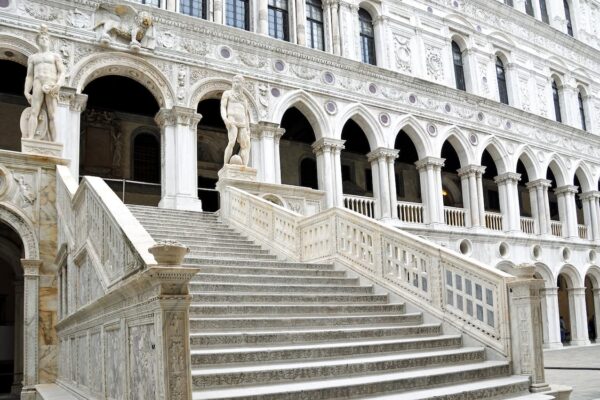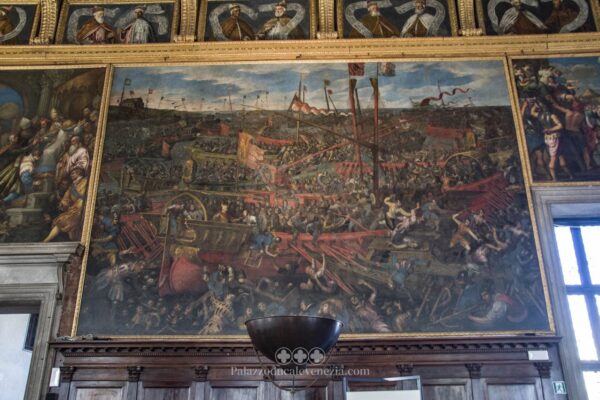The Sala dell’Anticollegio (Antechamber to the Hall of the Full College) is a room inside the Doges’ Palace in Venice that served as a ‘waiting room’ for those waiting to be received by the College of the Serenissima Signoria.
But what is the Serenissima Signoria? What does it have to do with this hall? What are the works inside?
Read on to find out more.
Before we begin, a brief preamble: if you plan to visit the Doge’s Palace in Venice, the Antechamber to the Hall of the Full College and all the other rooms, it is strongly recommended that you buy your ticket online, to avoid the long queue that may form at the ticket office. By purchasing the ticket in advance, you will be able to access the Palace skipping the queue at the entrances.
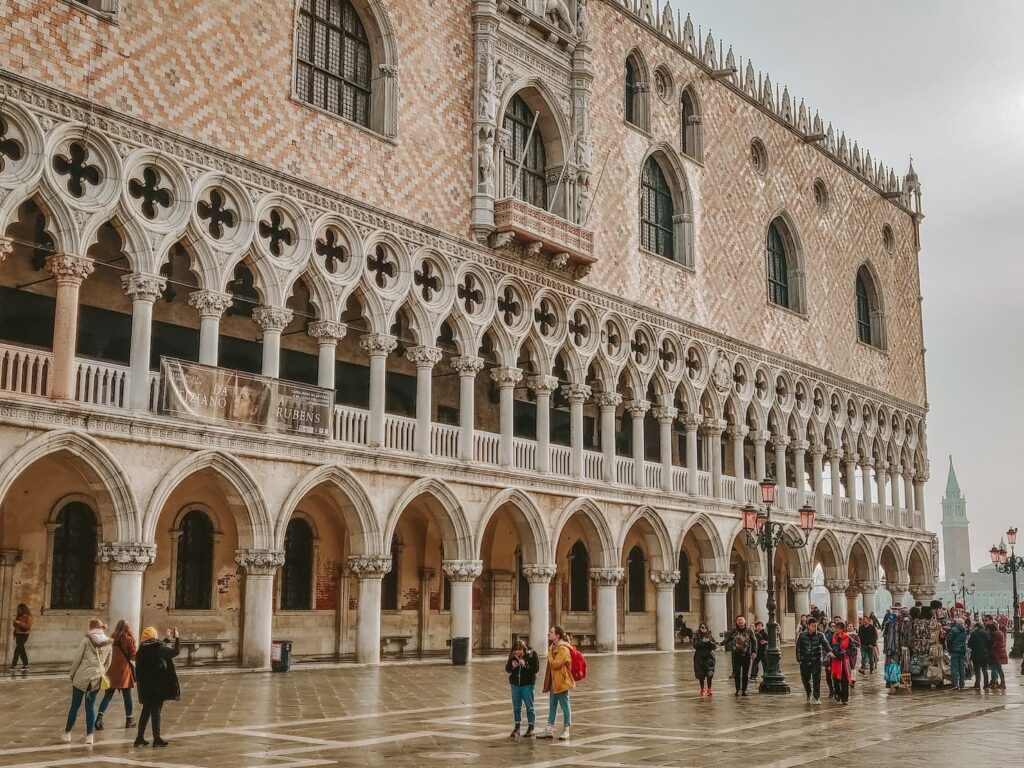
Skip-the-line ticket Doge’s Palace Venice: Quick access
Buy online. Choose the time you prefer. Visit the Doge’s Palace in Venice, the Hall of the Great Council, the prisons and much more.
You can cancel for free up to the day before your visit.
Table of content
Antichamber of Full College Hall: history and architecture
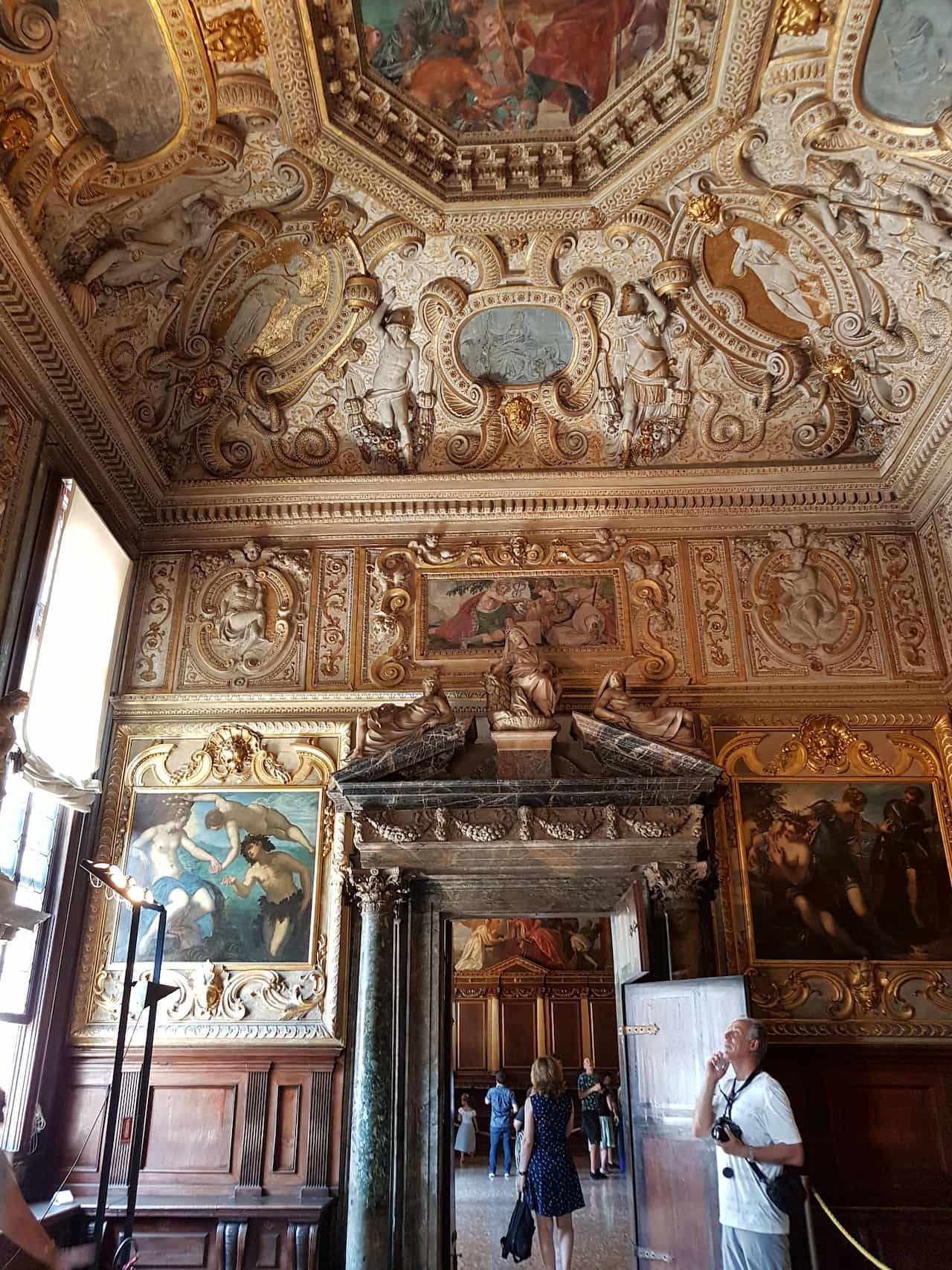
The room served as a waiting room for those receiving audiences from the Serenissima Signoria, such as foreign delegations, ambassadors and magistrates returning from assignments ‘abroad’.
Damaged by fire in 1574, the hall was renovated to a design by Andrea Palladio and Vincenzo Scamozzi.
Antechamber to the Hall of the Full College: works and paintings
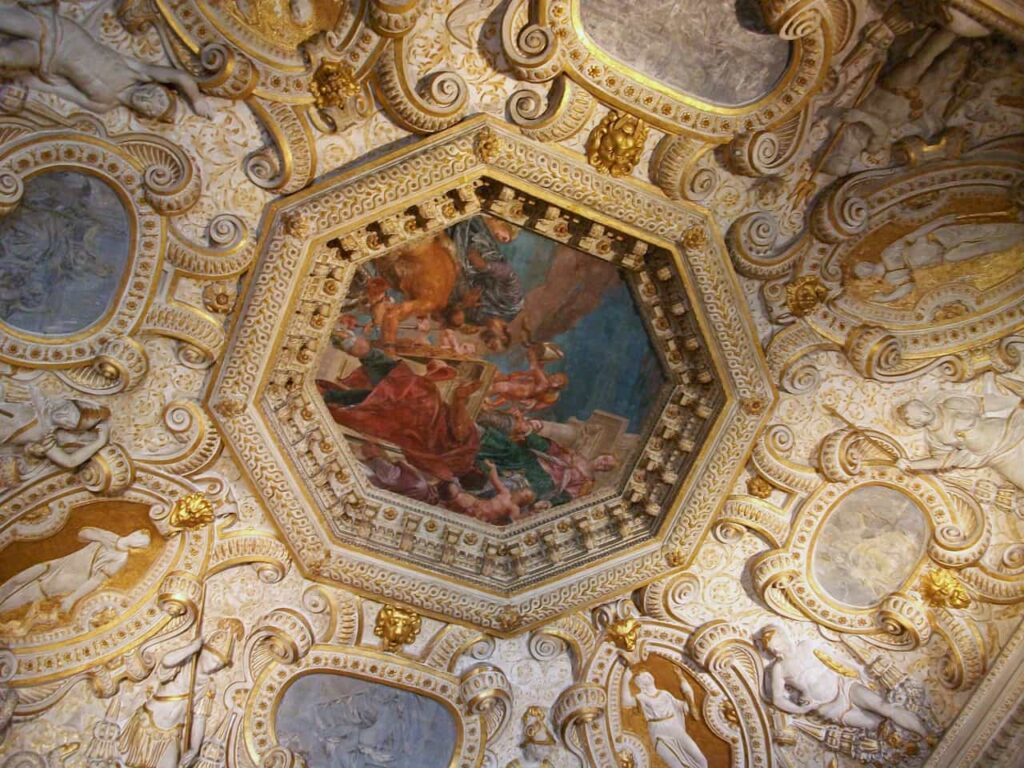
Along the wall on which the windows open is the monumental fireplace with the two marble telamons, designed by Scamozzi. On the upper base of the fireplace is a relief with Venus asking Vulcan for weapons for Aeneas by Tiziano Aspetti.
In the center of the ceiling is an octagon with a fresco by Paolo Veronese depicting Venice dispensing wealth and honors.
Also by Veronese, and placed opposite the windows, is The Rape of Europa. The work was commissioned by Jacopo Contarini for the palace of San Samuele. It was later donated to the Doge’s Palace in 1713.
On the walls are four canvases by Jacopo Tintoretto originally made for the square atrium, Mercury and the Graces, Pallas Pushes Mars Away, Ariadne Found by Bacchus and The Forge of Vulcan. These allegories of the seasons allude to prosperity, concord and the four elements, but can also be interpreted to signify the wise and prudent government of the Republic.
The tympanum of the portal leading to the College Hall is surmounted by three sculptures by Alessandro Vittoria: the personifications of Venice, with those of Concordia and Gloria on either side.
The ceiling is decorated with gilded stucco work by Vittoria and Bombarda.
What was the Serenissima Signoria?
The Serenissima Signoria was the supreme representative body of the Venetian Republic.
This body was composed of:
- the Doge, i.e. the Head of State of the Republic;
- by the six Ducal Councilors of the Minor Council;
- the three heads of the Quarantia.
The Minor Council and the Quarantia assisted the Doge and had the task of supervising him.
The role of the Serenissima Signoria was so important that it surpassed the doge himself, so much so that on the occasion of the death of the head of government the phrase ‘si è morto il Doxe, no la Signoria’ (if the Doge died, the Signoria did not die) was uttered.
Conclusions
This was the story of the famous Antechamber to the Hall of the Full College in the Doge’s Palace in Venice. If you want to find out more, read the complete list of rooms and interiors in the Doge’s Palace, or have a look at the article on the Chamber of Great Council, the most important hall in the building.

Skip-the-line ticket Doge’s Palace Venice: Quick access
Buy online. Choose the time you prefer. Visit the Doge’s Palace in Venice, the Hall of the Great Council, the prisons and much more.
You can cancel for free up to the day before your visit.
Photo credits:
- Sala dell’Anticollegio: Photo by Ricardalovesmonuments via Wikimedia
- Opere all’interno della Sala dell’Anticollegio: Photo by Joanbanjo via Wikimedia
